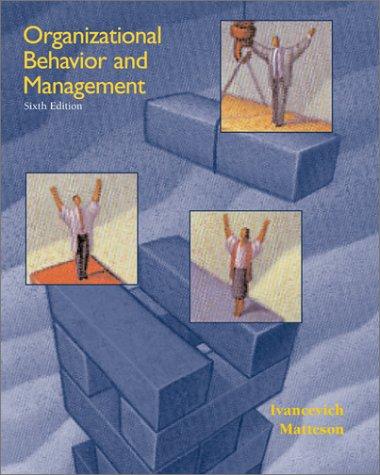Question
1.Marginal analysis compares ____________ and ____________ to determine the optimal outcome or choice. a.total benefits, total costs b.total benefits, marginal costs c.marginal benefits, total costs
1.Marginal analysis compares ____________ and ____________ to determine the optimal outcome or choice.
a.total benefits, total costs
b.total benefits, marginal costs
c.marginal benefits, total costs
d.marginal benefits, marginal costs
2.Marginal utility is _______________ .
a.the additional satisfactionproduced as the firm adds one additional unit of an input
b.the additional satisfaction that a consumer derives from consuming one additional unit of a good
c.the amount of utility divided by the number of units produced
d. all of the above
3.Bobby is speaking to his friend and says, "this musicalis going to cost me$60
when I buy the ticket." His friend corrects him and says, "actually, this concert will cost you more than$60
since you have to miss work." His friend is referring to the _________________.
a. economies of scale
b. budget constraint
c. opportunity cost
d. opportunity set
4.The budget constraint framework, which assumes that decision-makers are rational and make decisions at the margin, assumes that ______________________.
a. sunk costs are a major determinant in the decision
b. sunk costs are irrelevant to the decision, therefore, should be ignored
c. decision-makers aim to recover sunk costs
d. decision-makers consider sunk costs to be a part of the marginal cost calculation
5.Suppose John has a budget of$82
that he spends on ice cream sundaes (Q
1
) and coffee (Q
2
). The price of ice creamsundaes recently increased from$4
per serving to$6
per serving and the price of coffee decreased from$5
to$4
per serving. Using John's budget constraint, if he purchases7
coffees, how many ice cream sundaes can he purchase?
q=
6.Which of the following is a major difference between a budget constraint and production possibilities frontier?
a. A production possibilities frontier conveys the relative prices of the two goods, whereas a budget constraint accounts for diminishing returns.
b. A production possibilities frontier is usually straight, whereas a budget constraint is typically curved.
c. A budget constraint typically has a constant slope, whereas the slope of a production possibilities frontier is usually different at various points.
d. There is no difference. They convey the same information.
7.In which of the following cases is productive efficiencyimproved?
a. producingmore output using the same input resources
b. producingless output using the same input resources
c. producingthe same output using fewer input resources
d. producingthe same output using more input resources
8.At one point in time, Germany produced watches, only sold them in their nation, and did not participate in watch trading. Today, Germany both imports and exports watches.How cancomparative advantageexplain this data?
a. It cannot; comparative advantage predicts that a country either exports a product or imports it, not both.
b. The pattern is not due to comparative advantage but to government restrictions on production.
c. Germany has a comparative disadvantage in watches.
d. Germany specializes in the production of high-end watches, which it exports, and imports low-end watches that can be produced at lower cost elsewhere.
Step by Step Solution
There are 3 Steps involved in it
Step: 1

Get Instant Access to Expert-Tailored Solutions
See step-by-step solutions with expert insights and AI powered tools for academic success
Step: 2

Step: 3

Ace Your Homework with AI
Get the answers you need in no time with our AI-driven, step-by-step assistance
Get Started


